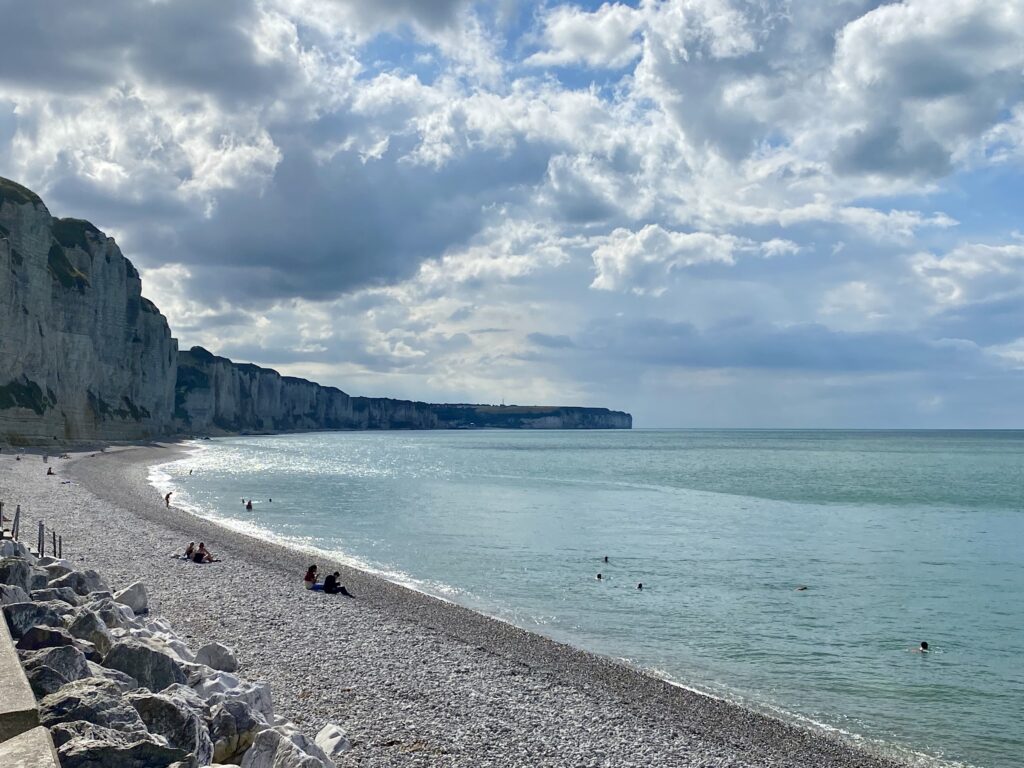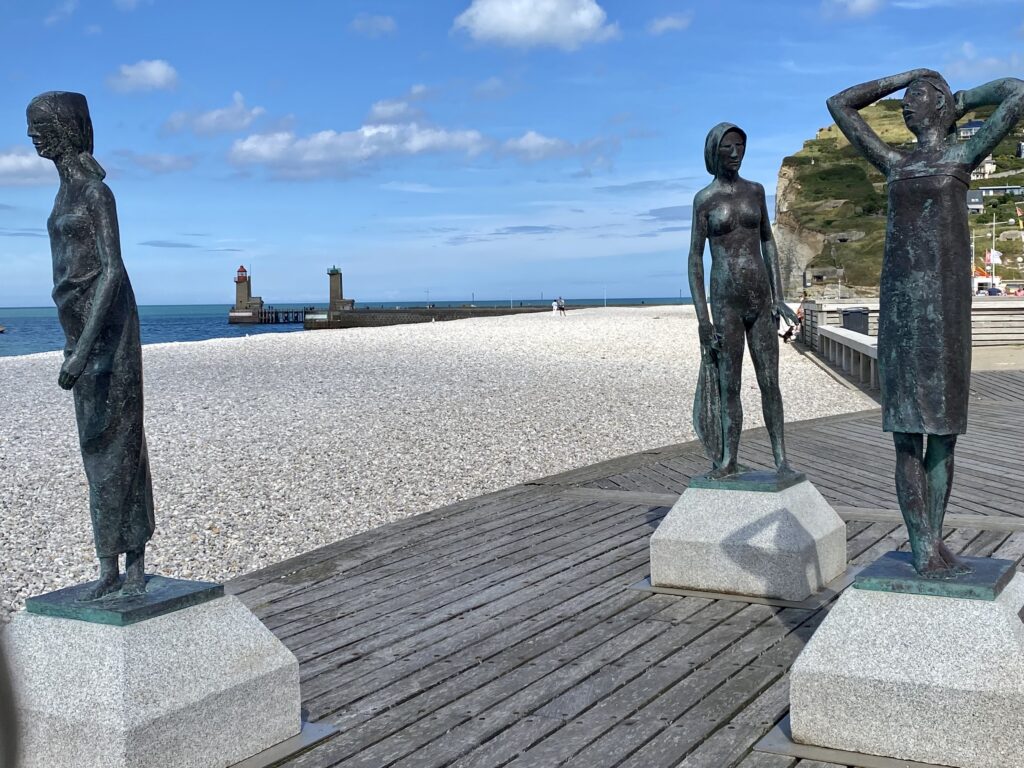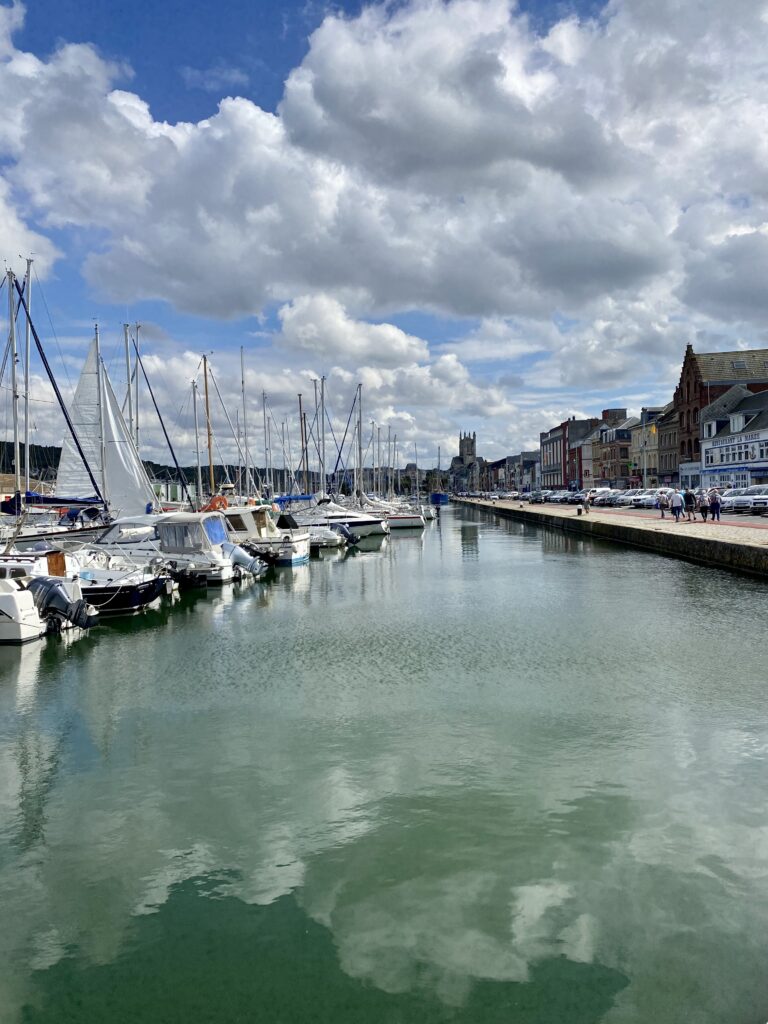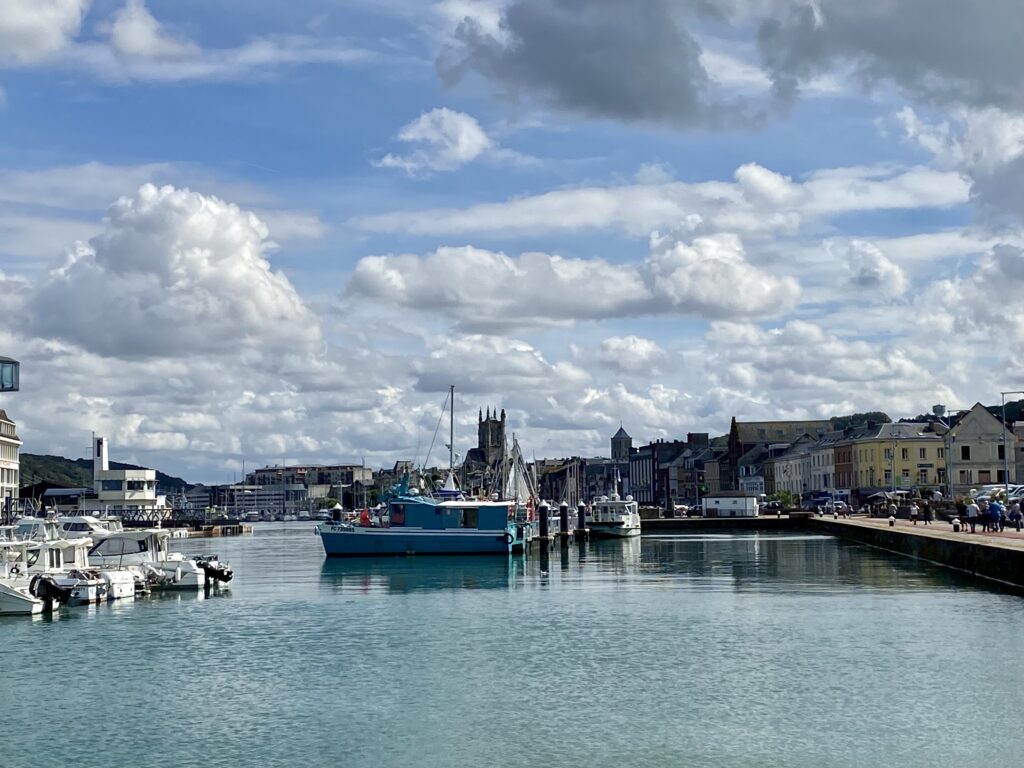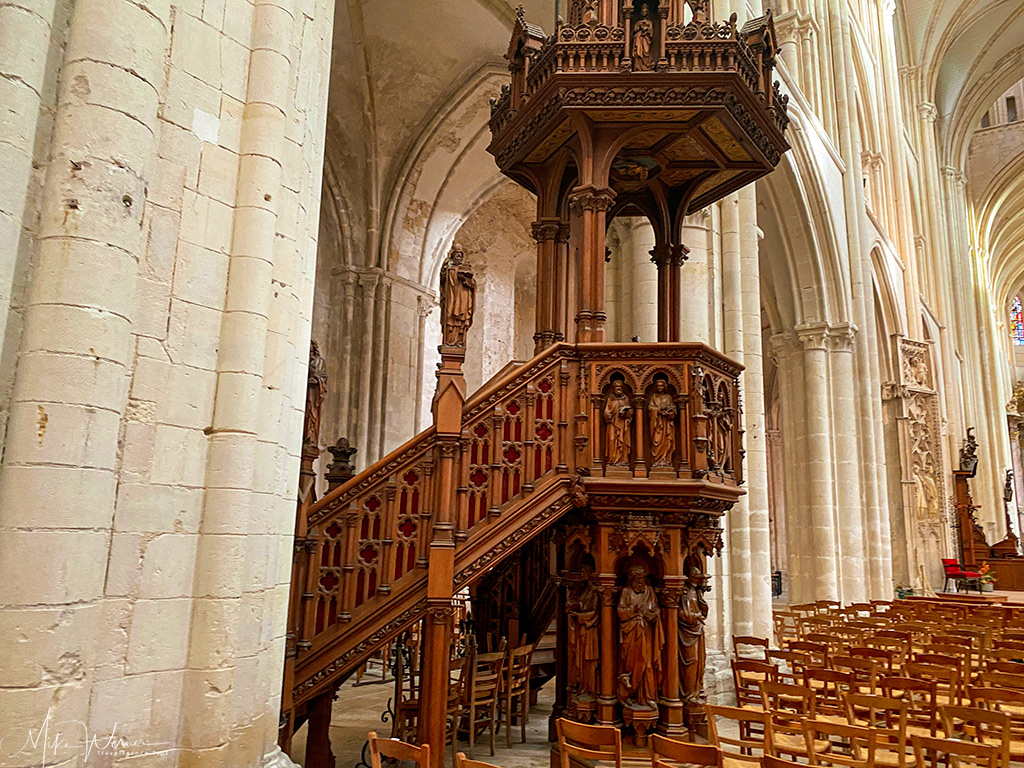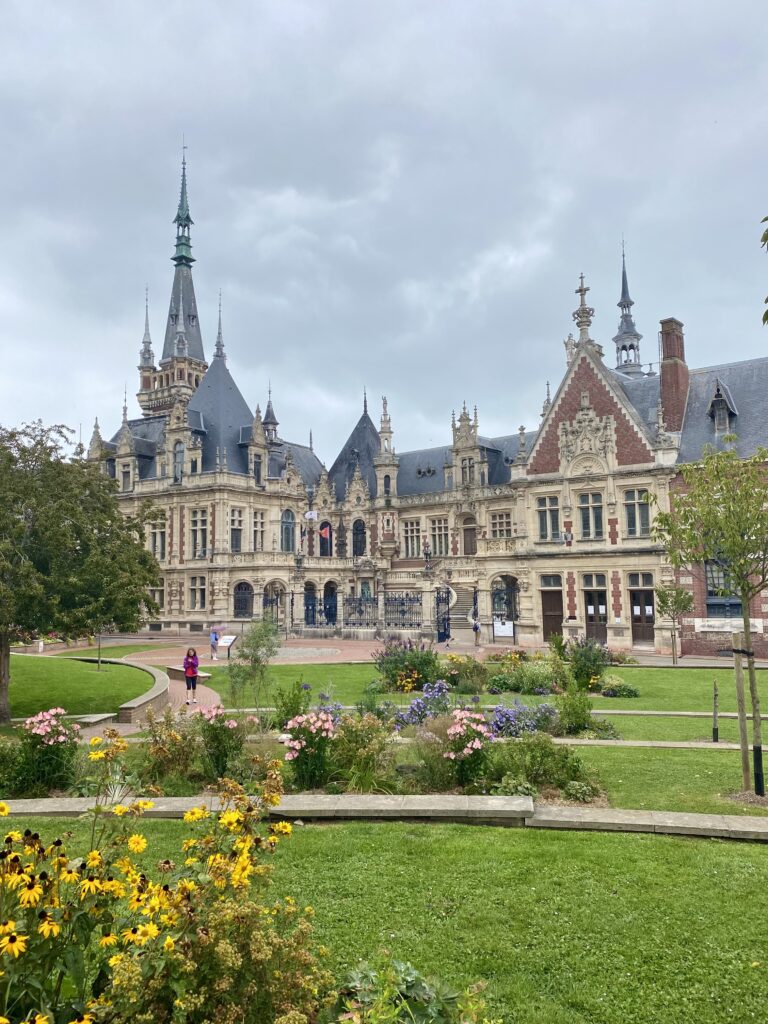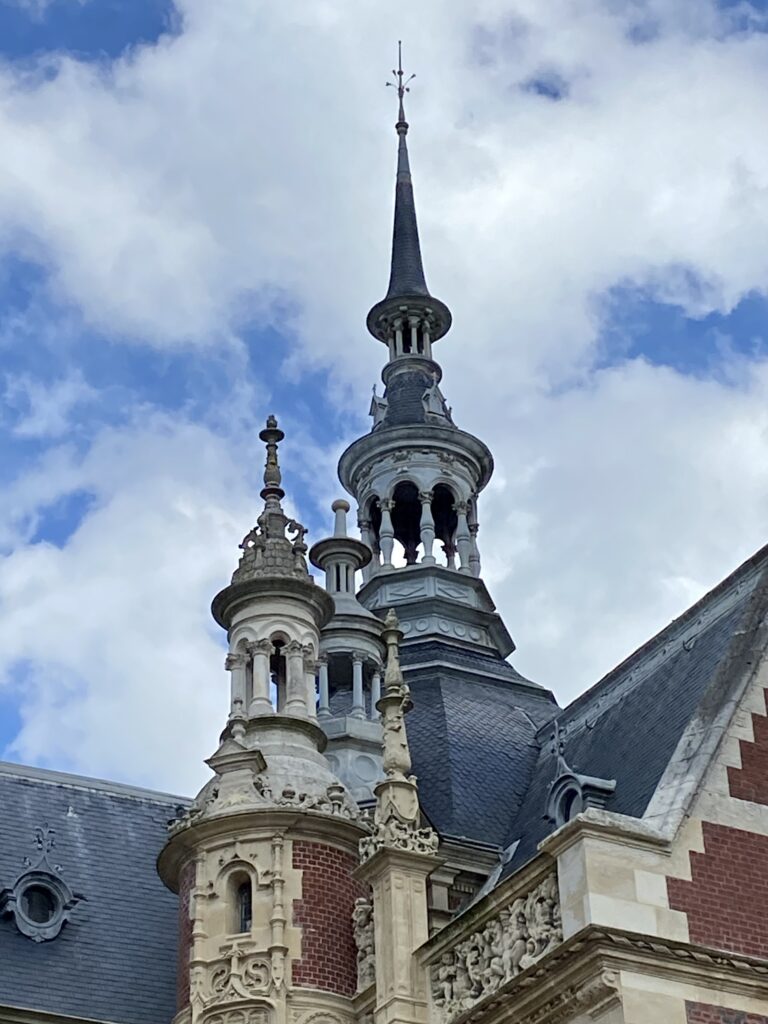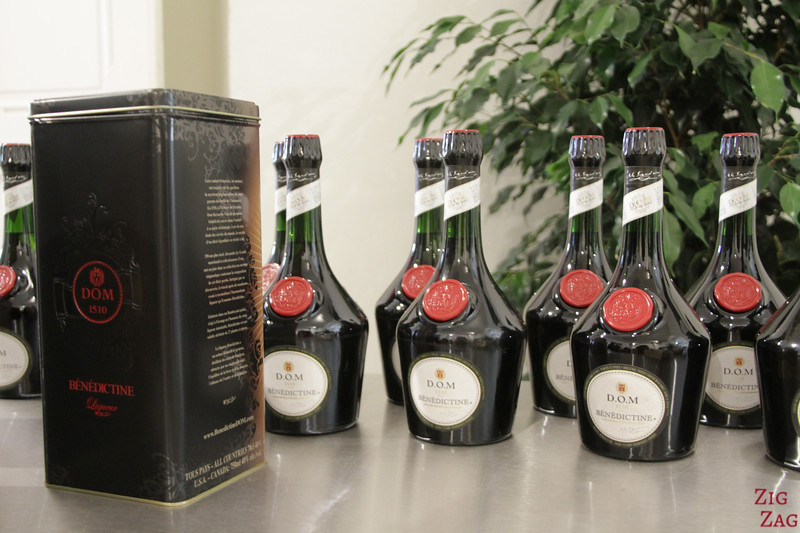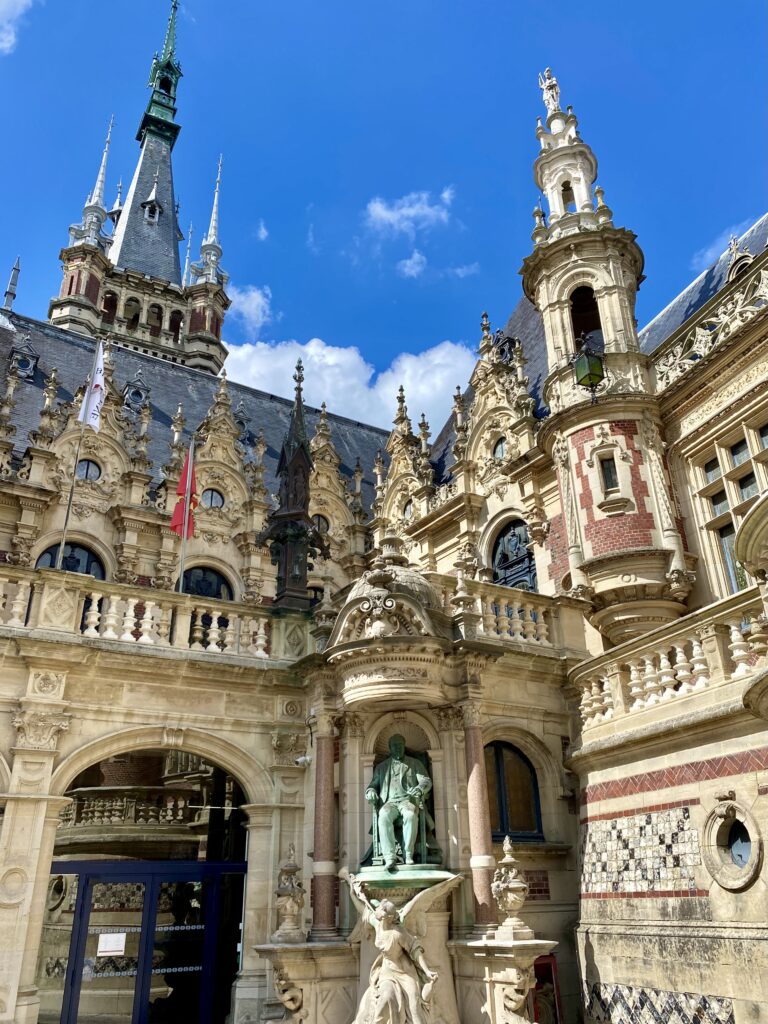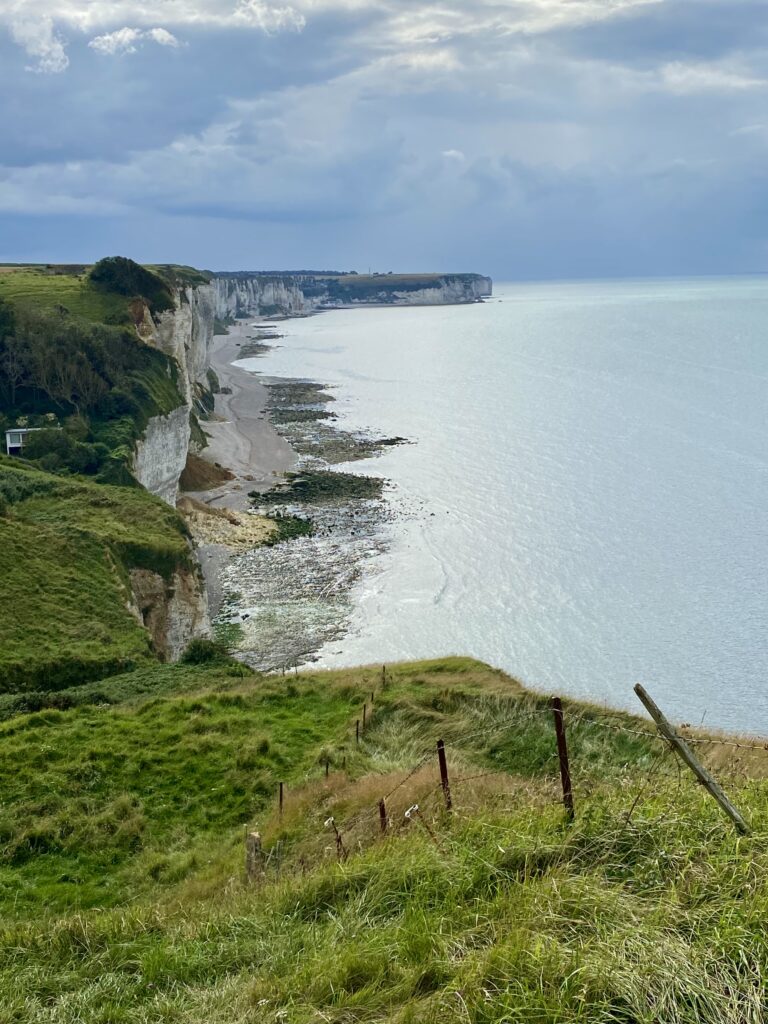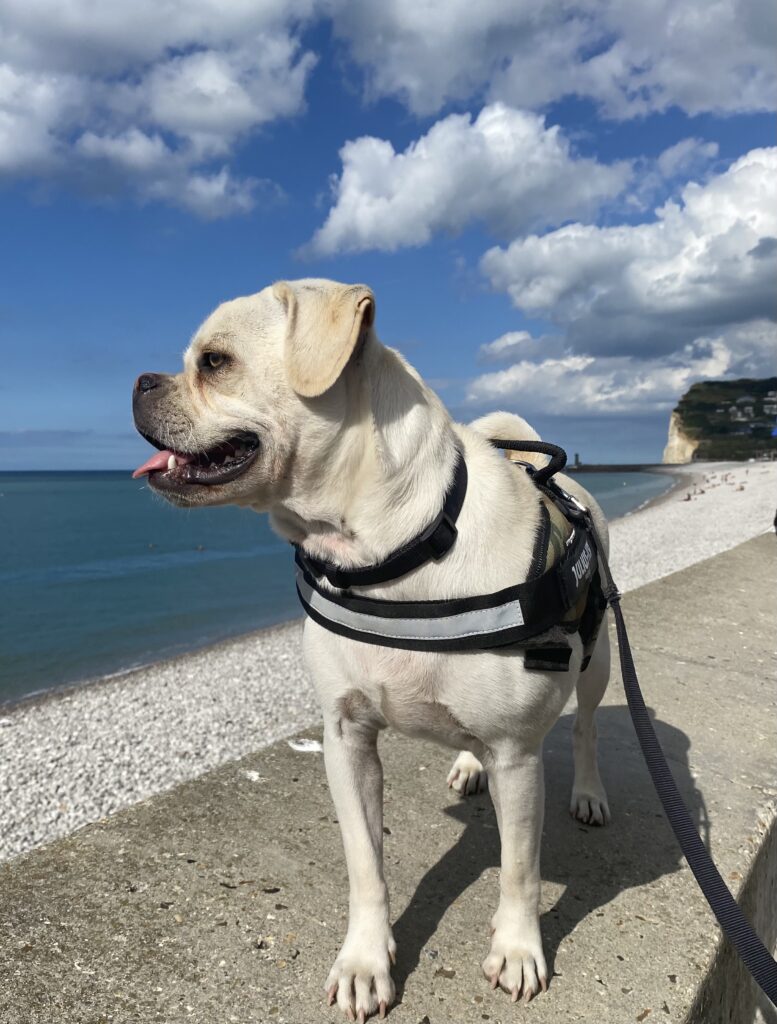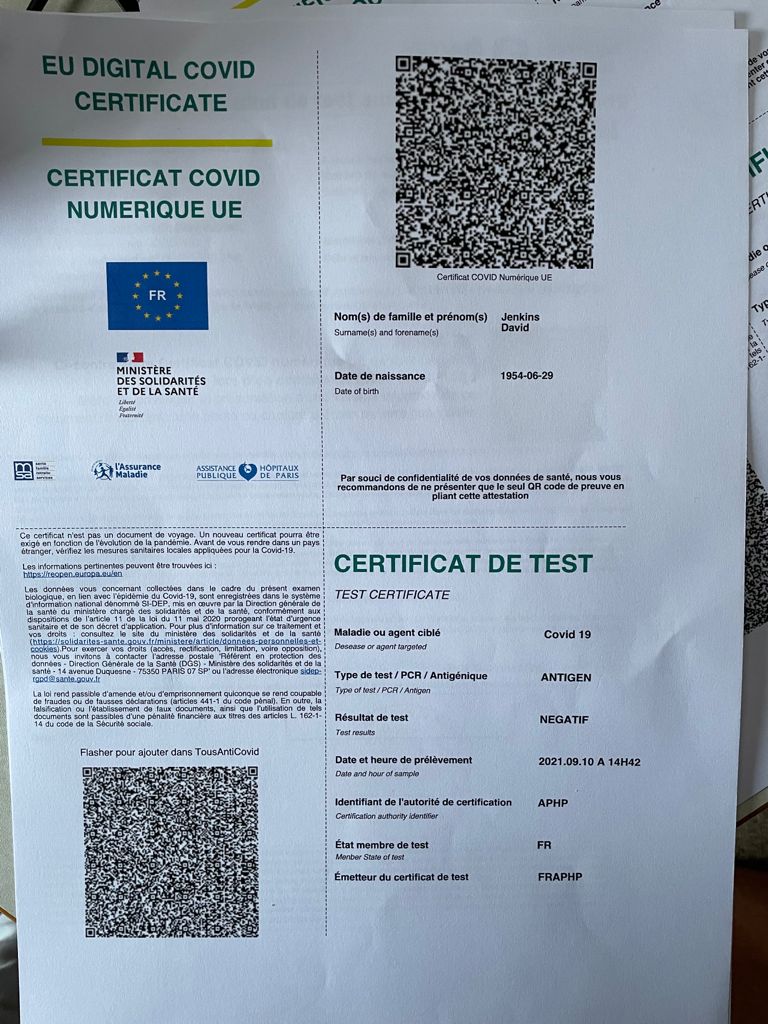And so we came to Fecamp.
I was near here just two years ago, walking the cliffs between Yport and Etretat but, for some reason, I never made it to Fecamp. I missed out then because Fecamp is a pretty little town well deserving of a couple of days of anybody’s time and; that is precisely how long we stayed this visit (although a chunk of our time was spent securing the necessary paperwork to get us and our dogs back into the UK).
Fecamp is a long established fishing port nestled amongst the tallest cliffs on the Cote d’Albatre (the Alabaster Coast). For many years the town’s primary interest was cod (Fecamp being the largest cod fishing port in France) with many of the port’s larger trawlers regularly making round trips to Newfoundland in search of cod. It wasn’t until the 19th century, as sea bathing became popular with high society, that the town moved towards becoming a seaside resort.
The port now holds as many pleasure boats as fishing boats but fishing (together with associated industries) remains a way of life for a significant number of the town’s 20,000 population.
The view back into town from the harbour side is dominated by the 16th century Church of Saint Etienne but, pretty as that church is, the principal tourist attractions away from the seafront are the 12th century Abbey Church of St Trinite and the 19th century Palais Benedictine.
Commonly known as Fecamp Abbey, the Abbey Church of the Holy Trinity in Fecamp was founded by Richard I Duke of Normandy on the site of an earlier church destroyed by Vikings. The church was frequently extended; becoming part of a large Benedictine abbey that would prosper until the French Revolution caused its closure and many of the the buildings were sold or destroyed. Now only the church still stands but it remains a seriously large albeit, from the outside, unattractive church. At 127 metres the nave is as long as the church of Notre Dame in Paris. In addition to holding the remains of Richard I of Normandy and his son (Richard II of Normandy), it houses an unusual yet very important religious relic namely, two vials of Sacred Blood. This blood was supposedly collected by Nicodemus at the foot of Christ’s cross following his crucifixion and was then inserted into the trunk of a fig tree that eventually washed up in the swampland of Fécamp. This legend seems a bit far fetched but it has served to attract pilgrims to the church for centuries.
For my part, the most impressive building in Fecamp is the Palais Benedictine. Built at the end of the 19th century the Benedictine Palace is a masterpiece of Gothic & Renaissance architecture. It is also the only place in the world where the “Benedictine” liqueur is distilled. First created by a 16th century monk, Dom Bernardo Vincelli, and then developed by Alexandre Le Grand some time during the French Revolution, the recipe is a closely guarded secret but it is also very difficult to describe it’s taste. The museum and the distillery inside the building are both open to the public and the distillery offers tours and tasting sessions.
There was time during our stay in Fecamp for me to take just a short walk along the cliffs outside the town. I chose to walk the cliffs to the south of the town, heading towards Yport (although it was never my intention to go quite that far) but I think the better walk would have been to the north.
Cap Fagnet and a more picturesque stretch of high cliffs are to the north. There are also fine views over Fecamp from Cap Fagnet; a number of well preserved WWII bunkers which can be explored and; of course, there is the small Chapel of Notre Dame de Salut with it’s gilded statue of the Virgin Mary on the roof. This chapel is dedicated to all sailors lost at sea. The track to the south has no fine view back over the town and, whilst there is an occasional WWII bunker, the views are not as good as those to the north.
The next day – that was it. The dogs had been seen by a local vet and their pet passports were all properly stamped up. We were in possession of our Covid Test certificates. We were ready to leave for the Eurotunnel. There was just time for a final walk around Fecamp, a spot of lunch (a kind of cheese stew, would you believe?) and then we were off…
The Fourth Tour of Europe was concluded…


